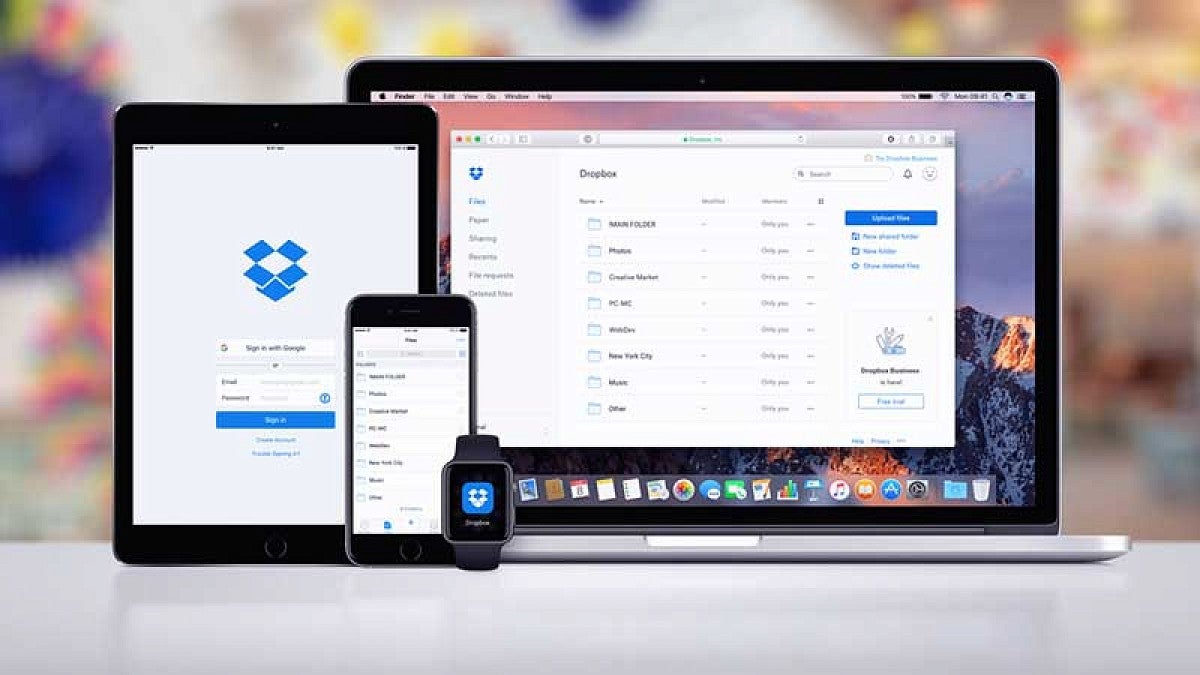The Dropbox file storage service will soon extend to all University of Oregon students.
The cloud-based service allows people to easily share files with others and to sync files between their computers and the cloud.
Students will gain access to the UO Dropbox service in groups of thousands per day from Sept. 8 to 18. During that window, each student will receive one of two automated invitation emails from Dropbox. Graduate employees won't receive the invitations because they already have Dropbox access.
"This spring we prioritized Dropbox for faculty and staff as a secure option for moving files to the cloud during our broad shift to remote work," said Jessie Minton, vice provost for information services and chief information officer. "We're glad to complete that effort by providing Dropbox to students in time for fall term."
"Faculty and researchers are already using this tool to collaborate with other research groups across universities," said Matt Riley, chief technology officer. "Now we're making it easier for them to collaborate with their students and student employees, and for students to collaborate with each other."
Any student who hasn't received an invitation by Sept. 19 can activate their UO Dropbox account online. Any UO faculty members, staff or graduate employees who haven't yet activated their account can do the same.
Students who have existing Dropbox accounts associated with uoregon.edu email addresses will be given the option to join the "University of Oregon team." For now, those users can choose to join the UO Dropbox team, change the email address associated with their account or ignore the invitation. Those with paid Dropbox accounts who join the UO team will receive a refund from Dropbox for the remainder of their existing personal subscriptions.
Each UO Dropbox account will be active only while the user is affiliated with the university.
Dropbox allows users to store files in the cloud, access them from multiple devices and through web browsers, and share them with collaborators both inside and outside the university.
Installing the Dropbox desktop application on a computer creates a Dropbox folder that looks just like a conventional Finder window on macOS or Explorer window on Windows. However, the files in that folder automatically sync to the user's Dropbox account in the cloud.
How-to articles, including a getting started page, are available in the UO Service Portal. Dropbox also offers video tutorials, live training webinars and how-to articles online.
Providing Dropbox as a universitywide service not only expands access but also offers greater data security, including compliance with the Family Educational Rights and Privacy Act of 1974, the federal law protecting student records known as FERPA.
"Our negotiations with Dropbox have ensured UO's data will be stored only in the United States, which isn't standard for them," Minton said in April. "That was key for meeting federal export control requirements for UO researchers and adds extra protection for student records, beyond what's required."
Contract negotiations with both Dropbox and Zoom were already underway in late winter as part of the communications and collaborative technologies program, formerly referred to as unified communications. Information Services accelerated launch plans for both services this spring to support remote instruction and work due to the COVID-19 outbreak.
Microsoft OneDrive continues to be available as the cloud storage option that integrates natively with the Microsoft Office apps. All UO students, staff and faculty members have access to OneDrive through UO's Office 365 platform, which also complies with FERPA.
For help with Dropbox, students should contact the Technology Service Desk or visit the Dropbox support page in the UO Service Portal.
—By Nancy Novitski, University Communications


